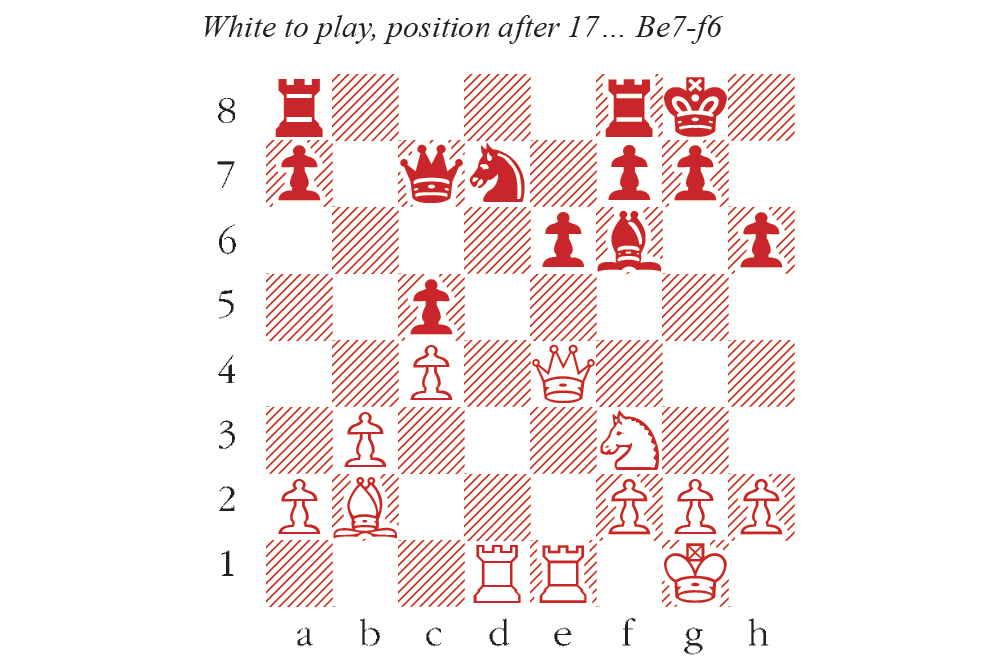‘Chess, an ancient game of strategy…’ – that’s what they write on the packaging in department stores. But in real life, playing a game of chess feels more like fighting fires, half of which you kindled yourself. Whatever grand ambitions you have, right now your queen is under attack and the next priority is your shaky kingside. But, first let’s go and attack that bishop! A game of chess is just one damned thing after another.
Even for the world’s best players, any planning is mostly implicit, since they recognise the contours of the game at a glance. In such and such position, the bishop belongs here and the knight belongs there, and this is the pawn break you aim for. Handy guidelines for sure, but in the implementation it all comes down to tactics: can I get away with playing that move first, when my opponent is about to strike on the other side?
Pervasive as it is, this reductive view of chess is not universal. One of my favourite books of the last decade was Boris Gelfand’s Positional Decision Making in Chess, (Quality Chess, 2015). Gelfand’s approach is resolutely old-fashioned and, for that reason, thoroughly refreshing. He venerates the Polish player Akiba Rubinstein, one of the strongest players of the early 20th century: ‘When you look at games like these… you see that Rubinstein’s play in the opening, middlegame and endgame is connected. Everything is tied together in what looks like one long plan… This is how I see it. And it is how I try to do it.’ Gelfand makes a compelling case that strategy still matters.
That is the spirit in which I enjoyed the game below, played at the European Club Cup in Albania. England’s highest-ranked woman, Jovanka Houska, is also a popular commentator, and in Albania she won a bronze medal for her performance on top board for Wood Green.
Jovanka Houska-Olga Dolgova
European Club Cup for Women, October 2023
1 d4 d5 2 c4 c6 3 Nf3 Nf6 4 e3 e6 5 Qc2 Be7 6 Nbd2 Nbd7 7 Bd3 h6 8 O-O O-O 9 b3 c5 10 Bb2 b6 11 e4 dxe4 12 Nxe4 Bb7 13 Rad1 Qc7 14 dxc5 bxc5 The pawn structure has clarified, but targeting the isolated queenside pawns is a distant prospect, so for now the game remains even. 15 Rfe1 Nxe4 A small but unnecessary concession, since weak pawns grow in significance when fewer pieces remain. 16 Bxe4 Bxe4 17 Qxe4 Bf6 (see diagram)18 Bc1! Not all exchanges are suitable! Houska’s move is much more purposeful than the exchange on f6, which would make it easy for Black to contest the open d-file. Rad8 19 Bf4 Qc8 20 Bd6 Rfe8 21 Rd3 Be7 22 Bxe7 Rxe7 23 Red1 Simple and strong, preventing Nd7-f6. Now 23…Re7-e8 was worth considering, but after 24 h3 Nf6 25 Qe5 Rxd3 26 Rxd3 White remains in control. Rde8 24 Ne5 Another astute decision. Once the knights are gone, there is no realistic way for Black to challenge the doubled rooks on the open file. Nxe5 25 Qxe5 f6 26 Qe3 Qc7 27 h4 With the opponent reduced to waiting, any small measures to increase the pressure are worth taking. Qa5 28 R1d2 Qc7 29 Rd6 Kf7 30 h5 Kg8 31 Qe4 a5 32 a4 Sealing off the counterplay. Black lacks the means to attack the weak pawn on b3. Qb7 33 Qe3 Qc7 34 R2d3 Kf7 35 Qe4 Kg8 36 g3 Qc8 37 Kh2 Qc7 38 Qc6 An invitation to an endgame, where the queenside pawns will be easy targets. Qa7 38…e5! 39 Qxc7 Rxc7 40 Ra6 e4 41 Re3 f5 42 Rxa5 Kf7 was grim but not hopeless. 39 Rd7 Rxd7 40 Rxd7 Qb8 41 Qxc5 Qxb3 42 Qa7 Qc2 43 Rxg7+ Kh8 44 Rg6 Re7 45 Qb8+ 45 Qxe7? Qxf2+ leads to a draw. Black resigns






Comments